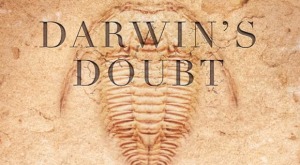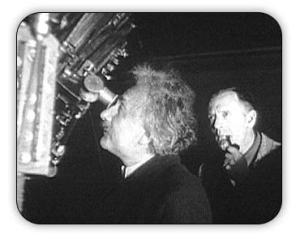
Throughout this blog I have transcribed some of the growing concerns with regard to the efficacy of Darwinian evolution in explaining the diversity and biological complexity of living organisms. I have also spent a great deal of time addressing the perennial issue of origins, shedding light on the scientific communities rather tentative approach in postulating a coherent theory which would adequately explain the origins of the first information necessary to produce life; a phenomena which surely must have transpired at some point in our distant past.
My purpose in writing this post is to provide a comprehensive critique on the contemporary orthodox perspective that an unguided naturalistic process could account for the origins of life and the rise of new complex biological novelties, as well as the origins of the cosmos – not mentioning the anthropic fine-tuning necessary for sustaining it.
One of the first things that I began to write about was the inconsistency between the fossil record and the theory of evolution, or macro-evolution, that is the gradual transition from one species into a fundamentally new anatomical creature. Darwin himself conceded the fact that in order for his theory to be viable it would have to be a very slow and progressive process because only small genetic variations meet the test of heritability; larger mutations typically result in death and/or sterility.
Thus by it own logic the Darwinian theory predicts a specific pattern of evidence when observing the fossil record. More to the point, one would expect innumerable transitional fossils illustrating a slow harmonious evolution of evolving complexity over millions and millions of years. Yet what we find is a rather abrupt beginning of life forms already in advanced anatomical stages. We see fully developed kinds that more or less remain the same until they go extinct, nothing that would seem to indicate a gradual evolution over time.
It was Steven M. Stanley, the renown American paleontologist and evolutionary biologist who wrote “Species that were once thought to have turned into others, have now been found to overlap in time with these alleged descendants. In fact the fossil record doesn’t convincingly document a single transition from one species to another.” In contrast to this notion that the fossil record supports an evolving tree of evolutionary complexity, Stanley touches on the reality that such is the diversity of life that often lends it self to plausible intermediates. But surely buried some where deep in the rocky strata there must be compiled countless transitional fossils collectively documenting the morphological evolution of life – right?

Tiktaalik, the poster child of Darwinian evolution – transitional fossil? or plausible intermediate?
It wasn’t until the 1970’s that we began to see paleontologist such as Stanley reject the concept of gradualism. Strictly adhering to the empirical data, Stephen J. Gould and Niles Eldredge were the first to introduce the theoretical concept of punctuated equilibria. In essence this was an attempt by paleontologist and evolutionary biologist, deeply ingrained in the philosophical concept of naturalism, to tailor an evolutionary theory to fit the lack of evidence for morphological trends in the fossil record.
“most families, orders, classes and phyla appear rather suddenly in the fossil record, often without anatomically intermediate forms smoothly interlinking evolutionary descendant taxa withe their presumed ancestors.” Niles Eldredge
“indeed the chief frustration of the fossil record is that we do not have empirical evidence for sustained trends in the evolution of most complex morphological adaptations” – Stephen J. Gould
Eldredge and Gould asserted that speciation is primarily restricted to rare and relatively rapid events (punctuation), outside of these episodic events species persist in a state of stasis, where they remain relatively unchanged (equilibrium).
“The Eldredge-Gould concept of punctuated equilibrium has gained wide acceptance among paleontologist. It attempts to account for the following paradox: within continuous sampled lineages, one rarely finds the gradual morphological trends predicted by Darwinian evolution.. The punctuated equilibrium model has been widely accepted, not because it has a compelling theoretical basis but because it appears to resolve a dilemma.” – Robert E. Ricklefs
The problem with the theoretical foundation of punctuated equilibrium is that its breaking alliance with one of evolution’s greatest allies – time! Thus while punctuated equilibrium seemingly bridges the gap in the fossil record, it raises some serious questions in the field of genetic populations.
In the arena of applied mathematics, natural selection acting on random mutations to produce new anatomical novelties is by no small measure a stretch of the imagination. The ratio of functional mutations to all the possible ways of arranging the genetic sequences in the DNA is astronomically small by anyone’s scientific standards. Thus when you begin to diminish the time-frame allotted for these transitions to take place, you seriously jeopardize an already infinitesimal likelihood of reaching your desired outcome.
Moreover, when we delve further into the mathematical plausibility of the mutational theory to account for the evolution of new ‘kinds’, we must also consider that in cases where we have land mammals evolving into fully aquatic creatures we need multiple coordinated mutations taking place in roughly the same time-span. For example, in order to get a successful transition from a Protocetus to a fully aquatic whale, we would need dramatic reorganization of the kidney tissue in order to take on salt water; we need hydrodynamic properties for the skin; forelimbs transformed into flippers; novel muscles for the blow hole; modified mammary glands to nurse its young underwater, etc,. etc,.

Predicated on the competition for survival, natural selection assumes that mutations provided for an edge in reproductive success among competing organisms. In order for evolution to be viable, every mutation must create a net benefit, otherwise natural selection will sift it out. Yet because mutations are random, the odds of getting multiple coordinated mutations necessary for sustaining a healthy marine vertebrate is mathematically inconceivable. In 2008 Durnin and Schmitt calculated the odds of simply getting two coordinated mutations for a complex adaptation like the one I just mentioned, and their conclusion was that you could get these two coordinated mutations once every 43.3 million years! – wheres the punctuation in that?
So are you willing to throw in the towel and slap a Jesus fish on your bumper yet? probably not.. and I agree while many of these anomalies don’t seem to have any specific scientific answer, they don’t necessarily beg the transcendental either. Invoking such explanations are more typically reserved for describing the emergence of life and the origins of the cosmos. 😉
In light of Sir Edwin Hubble’s discovery of the expanding universe we reach two very important questions that biologist and physicist have yet to answer. In relation to purely natural processes: (1) How did the universe begin? (2) How was the first information assembled?
Up until the 30’s most scientist believed that universe was eternal and that all life could be explained by a seamless natural process – human life, simpler life, chemical life, elementary particles from eternities past. Yet It was Albert Einstein’s field equations of general relativity and his new scheme for understanding the dimensions of ‘space-time’ that first postulated the theoretical concept of an expanding universe. Though it’s philosophical implications would initially lead Einstein to hypothesize a counteracting equation known as the cosmological constant, he would later refer to this illusory constant as the “greatest blunder” of his professional career.
Hubble’s usage of the great dome telescopes to document the data for the expanding universe has proved to be one of the most remarkable scientific discoveries ever. If the universe is continually expanding, then what happens when we begin to wind the clock backward? In 1969 Stephen Hawking solved Einsteins field equations and concluded that if if we go back far enough in time the curvature of ‘space-time’ would become so tight that it would become infinitely tight. For most scientist this was a very unpleasant reality, because for the first time there appeared to be considerable evidence in favor of the supernatural.

“This is an exceeding strange development unexpected by all but the theologians who have accepted the word of the Bible. For the scientist who has lived by his faith in the power of reason, the story ends like a bad dream. He has scaled the mountains of ignorance; he is about to conqueror the highest peak, as he pulls himself over the final rock, he is greeted by a band of theologians who have been siting there for centuries.” – Robert Jastrow
Further down the rabbit hole we begin to reach the origins of life, a mystery that often invokes the most exotic and mystical explanations that you will ever hear – typically rendering most naturalist content to avoid the question all together. However, there are a few things that we do know, we know that in order for proteins to assemble they need the information coded in the DNA. Much like the syntax in language or computer programming, the DNA is characterized by what is known as sequence specificity, meaning that the specific arrangement of its parts are necessary for it’s function as a whole. Apart from this specified information amino acids do not have the capacity to organize themselves into a meaningful biological sequence. Dean Kenyon, ex-chemical evolutionary theorist argues that “the enormous problem that is neglected is the origins of genetic information it self.. We have not the slightest chance of chemical evolutionary origin for the simplest cell.”
To this day chemical evolution persist as the most inconceivable conceptual theory in the scientific community. There are absolutely no known naturalistic processes that have ever demonstrated the ability to generate the information necessary for the first life. So how does the naturalist reconcile this dichotomy between materialism and origins? well they don’t.. atheism has simply become the default among pretentious intellectuals who assert that belief in God is puerile, and anyone who disagrees simply gets stigmatized and bullied into the outskirts of the “scientific” debate.
A fact of contemporary life is that there has been a serious decline of religious faith. Thus there is a hunger for a creation story that doesn’t involve any external or transcendental explanation. Evolution and other atheistic ideologies are adopted merely on the qualification that they comply with a party-line that says ‘you may embrace any methodology that doesn’t invoke intelligence.’ Yet it is our knowledge of cause and effect that tells us complexity and design always point to an acting agent.
Intelligent design is not objected to on the grounds of inconclusive evidence, physics clearly points us to a theistic “in the beginning” type of explanation; rather, Intelligent design is objected because of it’s philosophical implications. Just as predicted, the world is perpetually becoming a darker and darker place, seeking to expel God from every political, social, cultural, and scientific thought. Information and empirical data will never be enough to sway some people from the depths of their naturalistic paradigm, because for some it’s not about the evidence, it’s about a fist-clenching dogmatic denial of God’s existence.






